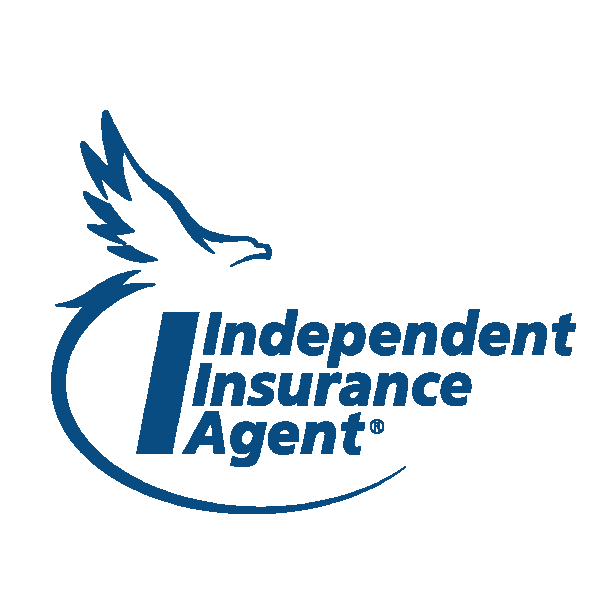Why Are Commercial Auto Insurance Costs Rising for Businesses in New Mexico?
CHECK OUR PRICESIn recent years, businesses in New Mexico have been grappling with the rising costs of commercial auto insurance. This trend has raised questions among business owners and fleet managers alike. Understanding the factors driving these increases is crucial for making informed decisions about insurance coverage and budgeting.
The Current Landscape of Commercial Auto Insurance in New Mexico
New Mexico, with its unique geography and economic landscape, presents a distinct set of challenges for businesses that rely on commercial vehicles. The state has seen a notable increase in the frequency and severity of accidents, which has contributed to higher insurance premiums.
Moreover, the insurance market itself is experiencing fluctuations. Insurers are adjusting their rates based on a variety of factors, including claims history, market competition, and regulatory changes. As a result, businesses are feeling the pinch of rising costs.
Understanding the Risk Factors
One of the primary reasons for the increase in commercial auto insurance costs is the growing number of accidents on New Mexico roads. According to recent statistics, the state has experienced a surge in traffic incidents, many of which involve commercial vehicles. This uptick in accidents leads to more claims, which in turn drives up premiums for all businesses.
Additionally, the severity of accidents has also risen. With more powerful vehicles on the road and the potential for catastrophic damage, insurers are forced to adjust their rates to cover the increased risk. This combination of higher frequency and severity of claims is a significant factor contributing to rising costs.
The Impact of Inflation
Inflation plays a crucial role in the rising costs of commercial auto insurance. The cost of vehicle repairs, replacement parts, and medical expenses has been on the rise, which directly impacts the insurance industry. As these costs increase, insurers must adjust their premiums to maintain profitability.
In New Mexico, inflation has been particularly pronounced in certain sectors, including automotive repair and healthcare. This means that businesses can expect to see their insurance premiums rise as insurers account for these increased costs in their pricing models.
Furthermore, the economic landscape in New Mexico is influenced by various factors, including the state's reliance on tourism and the oil and gas industry. Fluctuations in these sectors can lead to unpredictable changes in demand for commercial vehicles, further complicating the risk assessment for insurers. For instance, during peak tourist seasons, the influx of vehicles on the road can lead to a higher likelihood of accidents, prompting insurers to reassess their risk exposure and adjust premiums accordingly. This cyclical nature of the economy adds another layer of complexity to the commercial auto insurance market.
Additionally, the state's diverse geography, which includes rural areas with less infrastructure and urban centers with heavy traffic, creates varying risk profiles for businesses. Companies operating in remote locations may face different challenges compared to those in metropolitan areas, such as longer response times for emergency services and limited access to repair facilities. Insurers must take these geographical nuances into account when determining rates, leading to a more tailored, yet often more expensive, insurance solution for businesses across New Mexico.
The Role of Technology in Insurance Pricing
Technology is reshaping the insurance landscape, and its impact on commercial auto insurance costs cannot be overlooked. Insurers are increasingly relying on data analytics to assess risk and determine premiums. This shift has both positive and negative implications for businesses in New Mexico.
On one hand, technology allows insurers to better understand risk factors and tailor policies accordingly. On the other hand, it can lead to higher premiums for businesses that are deemed higher risk based on their data profiles. This can create challenges for small and medium-sized enterprises that may not have the same resources to mitigate risks as larger corporations. The reliance on data also raises questions about privacy and the ethical use of information, as businesses must navigate the fine line between transparency and data security.
Telematics and Usage-Based Insurance
Telematics, which involves the use of GPS and onboard diagnostics, is becoming more prevalent in the commercial auto insurance industry. Insurers are using this technology to monitor driving behavior, such as speed, braking patterns, and mileage. While this can lead to lower premiums for safe drivers, it can also result in higher costs for those who engage in risky driving behaviors.
Businesses that adopt telematics can potentially benefit from usage-based insurance models, which reward safe driving with lower premiums. However, those who do not implement such technologies may find themselves facing higher costs as insurers adjust their rates based on driving data. Furthermore, the integration of telematics can also provide businesses with valuable insights into their fleet operations, allowing them to identify areas for improvement and enhance overall safety measures. This proactive approach not only helps in reducing insurance costs but also contributes to a safer driving environment for all road users.
Market Competition and Its Effects
The commercial auto insurance market in New Mexico is competitive, with numerous insurers vying for business. However, this competition can have mixed effects on pricing. While competition can drive down prices in some cases, it can also lead to instability in the market.
Insurers may lower their rates to attract new customers, but if they experience significant losses due to claims, they may quickly raise premiums across the board. This cycle can create uncertainty for businesses trying to budget for their insurance needs. Additionally, the emergence of insurtech companies is further complicating the landscape, as these tech-driven firms often employ innovative pricing models and customer engagement strategies that traditional insurers may struggle to match. As a result, businesses must stay informed about market trends and consider multiple options to ensure they are getting the best coverage at a competitive price, while also being aware of the potential volatility that can arise from aggressive pricing strategies in a crowded marketplace.
Regulatory Changes and Their Impact
Regulatory factors also play a significant role in the rising costs of commercial auto insurance in New Mexico. Changes in state laws and regulations can impact how insurers operate and the coverage they are required to provide.
For instance, if the state increases minimum coverage requirements, businesses may find themselves needing to purchase more coverage than they previously had. This can lead to higher premiums, particularly for those who may not have budgeted for the additional costs. Furthermore, regulatory changes can also affect the claims process, potentially leading to longer wait times and increased administrative burdens for insurers, which can further contribute to rising costs.
Understanding Liability and Coverage Requirements
Liability coverage is a critical component of commercial auto insurance, and understanding the requirements in New Mexico is essential for businesses. The state mandates certain minimum liability limits, and failing to meet these requirements can result in significant penalties.
As liability limits increase, so too do the costs associated with obtaining adequate coverage. Businesses must carefully assess their insurance needs and ensure they are compliant with state regulations to avoid costly fines and legal issues. Additionally, it is important to note that the nature of a business's operations can influence its liability exposure; for example, companies that transport hazardous materials may face stricter liability requirements and higher premiums compared to those in less risky industries.
The Importance of Risk Management
Effective risk management strategies can help businesses mitigate the impact of rising insurance costs. By implementing safety protocols, conducting regular vehicle maintenance, and providing driver training, companies can reduce their risk profiles and potentially lower their premiums.
Additionally, businesses should regularly review their insurance policies to ensure they are getting the best coverage for their needs. Working with an experienced insurance broker can help identify areas for improvement and cost-saving opportunities. Moreover, investing in technology such as telematics can provide valuable data on driving behaviors, allowing businesses to address risky practices proactively. This not only enhances safety but can also lead to discounts on insurance premiums as insurers recognize the reduced risk associated with such proactive measures.
Strategies for Managing Rising Insurance Costs
As commercial auto insurance costs continue to rise, businesses in New Mexico must adopt proactive strategies to manage their expenses. Here are some effective approaches to consider:
Shop Around for Coverage
One of the most effective ways to manage insurance costs is to shop around for coverage. Different insurers may offer varying rates and coverage options, so it's essential to compare quotes from multiple providers. This process can help businesses find the best deal for their specific needs.
Additionally, businesses should consider working with an insurance broker who can provide insights into the market and help negotiate better rates. Brokers often have access to a wider range of options and can tailor coverage to meet unique business requirements. They can also help identify any gaps in coverage that may exist, ensuring that businesses are adequately protected while still keeping costs manageable.
Implement Safety Programs
Investing in safety programs can yield significant long-term savings on insurance premiums. By creating a culture of safety within the organization, businesses can reduce the likelihood of accidents and claims. This can include driver training programs, regular vehicle inspections, and the implementation of safety technology.
Insurers may offer discounts for businesses that demonstrate a commitment to safety, making it a worthwhile investment for reducing overall insurance costs. Furthermore, fostering a safe work environment not only lowers insurance premiums but also enhances employee morale and productivity. Engaging employees in safety initiatives, such as reward programs for safe driving or safety audits, can further solidify this culture and lead to a more responsible workforce.
Consider Higher Deductibles
Another strategy for managing rising insurance costs is to consider opting for higher deductibles. While this means that businesses will pay more out of pocket in the event of a claim, it can lead to lower premium costs. This approach can be particularly beneficial for businesses with a strong safety record and lower claims history.
However, it's crucial to ensure that the business can comfortably afford the deductible amount in case of an accident. Balancing deductible amounts with premium costs is key to finding the right insurance strategy. Additionally, businesses might want to conduct a thorough analysis of their financial situation and risk tolerance before making this decision. This includes evaluating past claims and understanding the potential impact of higher deductibles on cash flow, as well as considering the overall financial health of the business in the event of unexpected incidents.
Conclusion: Navigating the Future of Commercial Auto Insurance in New Mexico
The rising costs of commercial auto insurance in New Mexico present challenges for businesses of all sizes. Understanding the factors contributing to these increases, from accident rates to regulatory changes, is essential for making informed decisions about coverage.
By implementing effective risk management strategies, shopping for competitive rates, and staying informed about industry trends, businesses can navigate the complexities of commercial auto insurance. As the landscape continues to evolve, proactive measures will be crucial for ensuring that businesses remain protected without breaking the bank.
Ultimately, the goal is to strike a balance between adequate coverage and manageable costs, allowing businesses to thrive in New Mexico's unique economic environment. With the right approach, it is possible to mitigate the impact of rising insurance costs and maintain a successful operation.
Want help insuring your business?
Speak with a licensed agent today to discuss your options for the best insurance for your business.
Prefer to speak with an agent now?
Call: 505-933-6511
Ask an agent now!
Dax Kastrin
Owner of Elemental Risk Management
For over a decade, ERM founder Dax Kastrin has had a passion for providing excellence in the commercial insurance industry.






